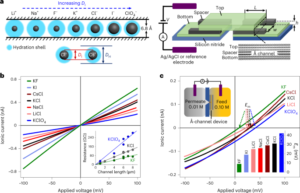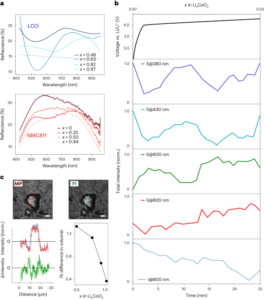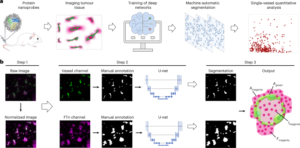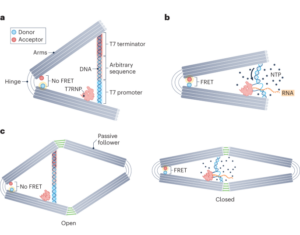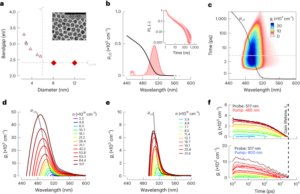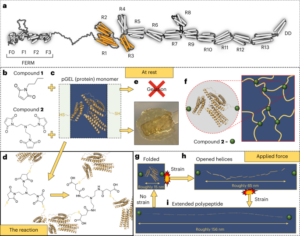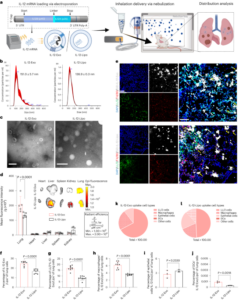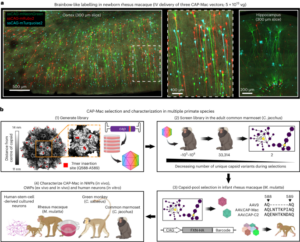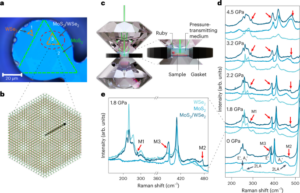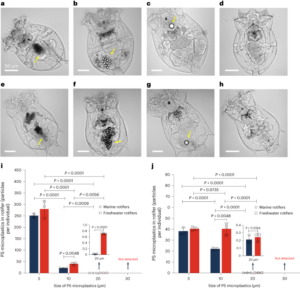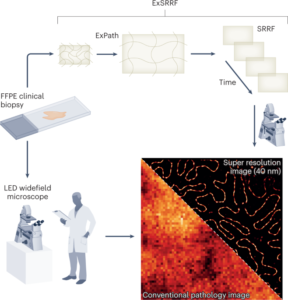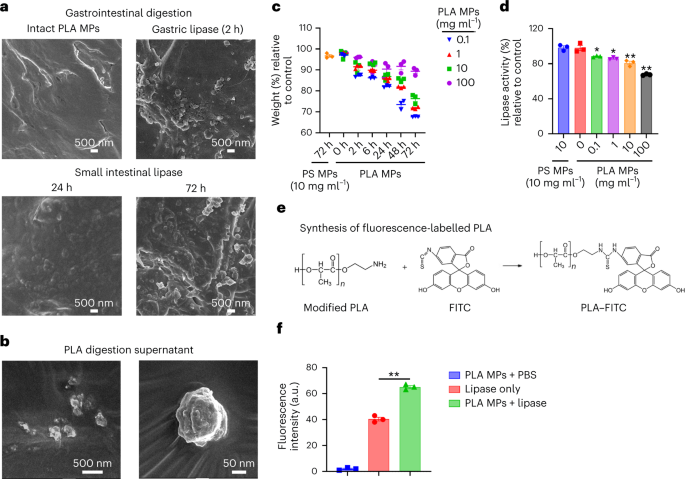
Hurley, R., Woodward, J. & Rothwell, J. J. Microplastic contamination of river beds significantly reduced by catchment-wide flooding. Nat. Geosci. 11, 251–257 (2018).
Galloway, T. S., Cole, M. & Lewis, C. Interactions of microplastic debris throughout the marine ecosystem. Nat. Ecol. Evol. 1, 0116 (2017).
Koelmans, A. A. et al. Risk assessment of microplastic particles. Nat. Rev. Mater. 7, 138–152 (2022).
Li, D. et al. Microplastic release from the degradation of polypropylene feeding bottles during infant formula preparation. Nat. Food 1, 746–754 (2020).
Senathirajah, K. et al. Estimation of the mass of microplastics ingested—a pivotal first step towards human health risk assessment. J. Hazard. Mater. 404, 124004 (2021).
Schwabl, P. et al. Detection of various microplastics in human stool: a prospective case series. Ann. Intern. Med. 171, 453–457 (2019).
Deng, Y. et al. Polystyrene microplastics affect the reproductive performance of male mice and lipid homeostasis in their offspring. Environ. Sci. Technol. Lett. 9, 752–757 (2022).
Sussarellu, R. et al. Oyster reproduction is affected by exposure to polystyrene microplastics. Proc. Natl Acad. Sci. USA 113, 2430–2435 (2016).
Choi, J. S., Kim, K., Hong, S. H., Park, K.-I. & Park, J.-W. Impact of polyethylene terephthalate microfiber length on cellular responses in the Mediterranean mussel Mytilus galloprovincialis. Mar. Environ. Res. 168, 105320 (2021).
Jin, H. et al. Evaluation of neurotoxicity in BALB/c mice following chronic exposure to polystyrene microplastics. Environ. Health Perspect. 130, 107002 (2022).
Geyer, R., Jambeck, J. R. & Law, K. L. Production, use, and fate of all plastics ever made. Sci. Adv. 3, e1700782 (2017).
Aznar, M., Ubeda, S., Dreolin, N. & Nerin, C. Determination of non-volatile components of a biodegradable food packaging material based on polyester and polylactic acid (PLA) and its migration to food simulants. J. Chromatogr. A 1583, 1–8 (2019).
Ncube, L. K., Ude, A. U., Ogunmuyiwa, E. N., Zulkifli, R. & Beas, I. N. Environmental impact of food packaging materials: a review of contemporary development from conventional plastics to polylactic acid based materials. Materials 13, 4994 (2020).
Balla, E. et al. Poly (lactic acid): a versatile biobased polymer for the future with multifunctional properties—from monomer synthesis, polymerization techniques and molecular weight increase to PLA applications. Polymers 13, 1822 (2021).
Ramot, Y., Haim-Zada, M., Domb, A. J. & Nyska, A. Biocompatibility and safety of PLA and its copolymers. Adv. Drug Deliv. Rev. 107, 153–162 (2016).
Zhang, X. et al. Photolytic degradation elevated the toxicity of polylactic acid microplastics to developing zebrafish by triggering mitochondrial dysfunction and apoptosis. J. Hazard. Mater. 413, 125321 (2021).
Duan, Z. et al. Diet preference of zebrafish (Danio rerio) for bio-based polylactic acid microplastics and induced intestinal damage and microbiota dysbiosis. J. Hazard. Mater. 429, 128332 (2022).
Wang, L. et al. An in situ depolymerization and liquid chromatography–tandem mass spectrometry method for quantifying polylactic acid microplastics in environmental samples. Environ. Sci. Technol. 56, 13029–13035 (2022).
Yan, M., Yang, J., Sun, H., Liu, C. & Wang, L. Occurrence and distribution of microplastics in sediments of a man-made lake receiving reclaimed water. Sci. Total Environ. 813, 152430 (2022).
Wei, X. F. et al. Millions of microplastics released from a biodegradable polymer during biodegradation/enzymatic hydrolysis. Water Res. 211, 118068 (2022).
González-Pleiter, M. et al. Secondary nanoplastics released from a biodegradable microplastic severely impact freshwater environments. Environ. Sci. Nano 6, 1382–1392 (2019).
Lambert, S. & Wagner, M. Characterisation of nanoplastics during the degradation of polystyrene. Chemosphere 145, 265–268 (2016).
Lambert, S. & Wagner, M. Formation of microscopic particles during the degradation of different polymers. Chemosphere 161, 510–517 (2016).
Mattsson, K., Björkroth, F., Karlsson, T. & Hassellöv, M. Nanofragmentation of expanded polystyrene under simulated environmental weathering (thermooxidative degradation and hydrodynamic turbulence). Front. Mar. Sci. 7, 578178 (2021).
Sorasan, C. et al. Generation of nanoplastics during the photoageing of low-density polyethylene. Environ. Pollut. 289, 117919 (2021).
Su, Y. et al. Steam disinfection releases micro (nano) plastics from silicone-rubber baby teats as examined by optical photothermal infrared microspectroscopy. Nat. Nanotechnol. 17, 76–85 (2022).
Wright, S. L. & Kelly, F. J. Plastic and human health: a micro issue? Environ. Sci. Technol. 51, 6634–6647 (2017).
Gruber, M. M. et al. Plasma proteins facilitates placental transfer of polystyrene particles. J. Nanobiotechnol. 18, 128 (2020).
Wang, H. F., Hu, Y., Sun, W. Q. & Xie, C. S. Polylactic acid nanoparticles across the brain-blood barrier observed with analytical electron microscopy. Chin. J. Biotechnol. 20, 790–794 (2004).
Dawson, A. L. et al. Turning microplastics into nanoplastics through digestive fragmentation by Antarctic krill. Nat. Commun. 9, 1001 (2018).
Ubeda, S., Aznar, M., Alfaro, P. & Nerin, C. Migration of oligomers from a food-contact biopolymer based on polylactic acid (PLA) and polyester. Anal. Bioanal. Chem. 411, 3521–3532 (2019).
Fan, P., Yu, H., Xi, B. & Tan, W. A review on the occurrence and influence of biodegradable microplastics in soil ecosystems: are biodegradable plastics substitute or threat? Environ. Int. 163, 107244 (2022).
Manavitehrani, I., Fathi, A., Wang, Y., Maitz, P. K. & Dehghani, F. Reinforced poly(propylene carbonate) composite with enhanced and tunable characteristics, an alternative for poly(lactic acid). ACS Appl. Mater. Interfaces 7, 22421–22430 (2015).
Navarro, S. M. et al. Biodistribution and toxicity of orally administered poly (lactic-co-glycolic) acid nanoparticles to F344 rats for 21 days. Nanomedicine 11, 1653–1669 (2016).
Bellac, C. L., Dufour, A., Krisinger, M. J., Loonchanta, A. & Starr, A. E. Macrophage matrix metalloproteinase-12 dampens inflammation and neutrophil influx in arthritis. Cell Rep. 9, 618–632 (2014).
Zangmeister, C. D., Radney, J. G., Benkstein, K. D. & Kalanyan, B. Common single-use consumer plastic products release trillions of sub-100 nm nanoparticles per liter into water during normal use. Environ. Sci. Technol. 56, 5448–5455 (2022).
Hernandez, L. M. et al. Plastic teabags release billions of microparticles and nanoparticles into tea. Environ. Sci. Technol. 53, 12300–12310 (2019).
Tilston, E. L., Gibson, G. R. & Collins, C. D. Colon extended physiologically based extraction test (CE-PBET) increases bioaccessibility of soil-bound PAH. Environ. Sci. Technol. 45, 5301–5308 (2011).
Macfarlane, G. T., Macfarlane, S. & Gibson, G. Validation of a three-stage compound continuous culture system for investigating the effect of retention time on the ecology and metabolism of bacteria in the human colon. Microb. Ecol. 35, 180–187 (1998).
Capolino, P. et al. In vitro gastrointestinal lipolysis: replacement of human digestive lipases by a combination of rabbit gastric and porcine pancreatic extracts. Food Dig. 2, 43–51 (2011).
- SEO Powered Content & PR Distribution. Get Amplified Today.
- Platoblockchain. Web3 Metaverse Intelligence. Knowledge Amplified. Access Here.
- Source: https://www.nature.com/articles/s41565-023-01329-y
- 1
- 10
- 11
- 1998
- 2011
- 2014
- 2016
- 2017
- 2018
- 2019
- 2020
- 2021
- 2022
- 28
- 39
- 7
- 9
- a
- across
- administered
- affect
- All
- alternative
- Analytical
- and
- applications
- article
- assessment
- Baby
- Bacteria
- barrier
- based
- billions
- case
- characteristics
- Collins
- combination
- Common
- components
- Compound
- consumer
- contemporary
- continuous
- conventional
- Culture
- Days
- Detection
- determination
- developing
- Development
- Diet
- different
- DIG
- distribution
- drug
- during
- ecosystem
- Ecosystems
- effect
- elevated
- enhanced
- environmental
- environments
- Ether (ETH)
- evaluation
- EVER
- expanded
- Exposure
- extraction
- Extracts
- facilitates
- feeding
- First
- following
- food
- formation
- formula
- from
- future
- generation
- Health
- Hong
- HTTPS
- human
- Impact
- in
- Increase
- Increases
- inflammation
- influence
- influx
- interactions
- issue
- Kim
- lake
- Law
- Length
- Lewis
- LINK
- Liquid
- made
- Marine
- Mass
- material
- materials
- Matrix
- method
- mice
- Microscopy
- migration
- millions
- molecular
- nano
- Nature
- normal
- Oyster
- packaging
- Park
- performance
- pivotal
- Plasma
- plastic
- plastics
- plato
- Plato Data Intelligence
- PlatoData
- polymer
- Polymers
- Production
- Products
- prospective
- Proteins
- Rabbit
- receiving
- Reduced
- release
- released
- Releases
- reproduction
- retention
- review
- Risk
- risk assessment
- River
- Safety
- SCI
- secondary
- Series
- significantly
- Steam
- Step
- Sun
- system
- Tea
- techniques
- test
- The
- The Future
- their
- threat
- Through
- throughout
- time
- to
- Total
- towards
- transfer
- triggering
- trillions
- turbulence
- Turning
- under
- use
- validation
- various
- versatile
- W
- Water
- weight
- X
- zephyrnet

